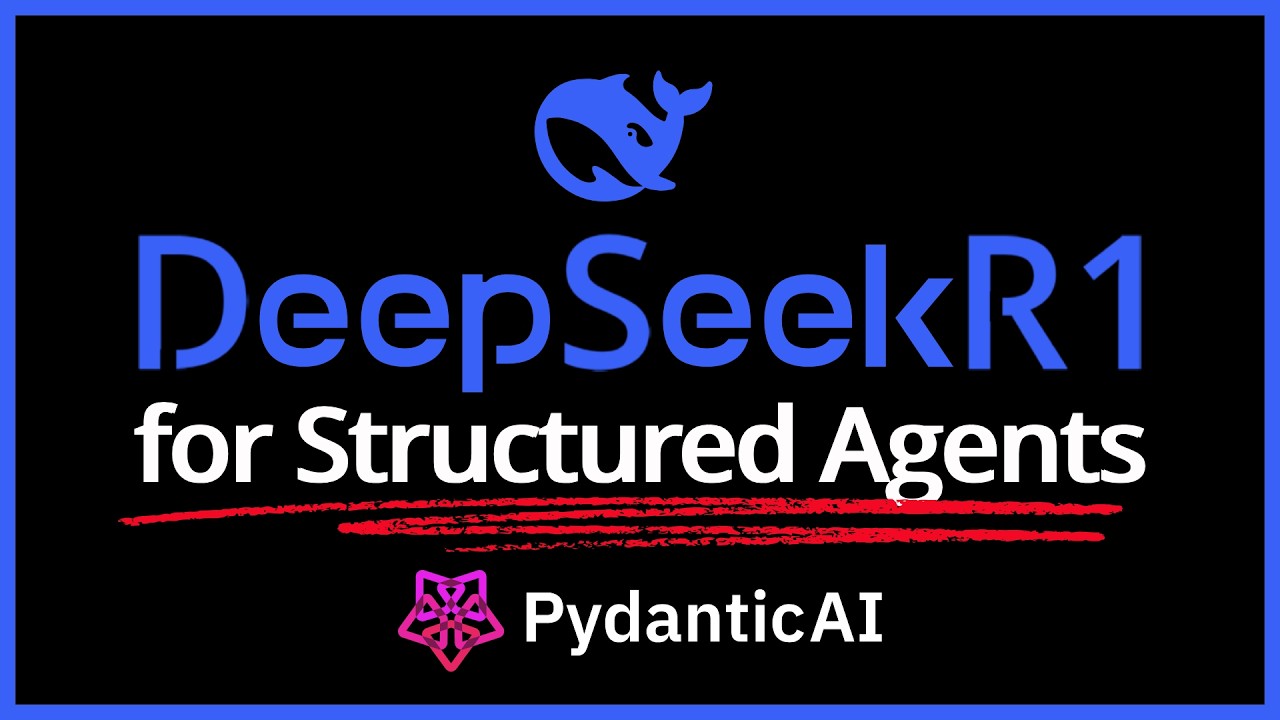The video discusses the DeepSeek R1 model’s application in creating structured agents, highlighting its recent search functionality and the challenges of generating structured outputs like function calling and JSON formatting. The presenter shares strategies for integrating DeepSeek with structured use cases, including a coding demonstration that showcases how to work around the model’s limitations by using a secondary model for formatting outputs.
In the video, the presenter discusses the DeepSeek R1 model and its application in creating structured agents. Following a previous video that explained how the DeepSeek model works, the focus shifts to practical implementation, particularly how to obtain structured responses from the model. The presenter highlights that DeepSeek has recently added search functionality to their website, allowing users to utilize both DeepSeek’s reasoning and search capabilities simultaneously. However, a significant challenge remains: the model currently lacks support for structured outputs like function calling and JSON formatting, which complicates the development of agents that rely on these features.
To address these limitations, the presenter shares various hacks and strategies for integrating the DeepSeek reasoning model into structured agent use cases. They mention that similar issues exist with the new Gemini 2.0 thinking models, which also do not support function calling or structured outputs at this time. The video emphasizes the importance of prompt engineering and using a prompting framework to coax structured responses from the models. The presenter also discusses the API configuration, noting that DeepSeek provides separate tokens for thinking and answer outputs, which can be useful for developers.
The video transitions into a coding demonstration using Google Colab, where the presenter sets up a search agent with the DeepSeek API. They explain how to configure the API to work similarly to OpenAI’s API, allowing for the use of DeepSeek’s chat and reasoning models. The presenter showcases how to implement a search tool and how the DeepSeek V3 model can effectively return structured outputs when prompted correctly. They illustrate this by running a query to generate a detailed breakdown of the DeepSeek R1 model, demonstrating the model’s ability to return organized information.
However, when attempting to use the DeepSeek R1 model directly for structured outputs, the presenter encounters limitations due to the model’s lack of function calling support. To work around this, they suggest using a secondary model, such as Gemini 1.5 Flash, to format the output from the DeepSeek R1 model into a structured format. This approach involves sending the unstructured output from the R1 model to the formatting agent, which can then return a well-organized response. The presenter emphasizes that while this requires an additional API call, the cost and speed of the secondary model make it a viable solution.
In conclusion, the video highlights the potential of the DeepSeek R1 model for reasoning tasks, despite its current limitations in structured output generation. The presenter encourages viewers to experiment with different models and combinations to achieve desired results in their applications. They also express interest in future developments with reasoning models and invite feedback from viewers on their experiences and projects involving these technologies. The video wraps up with a call to action for viewers to like and subscribe for more content on this topic.
